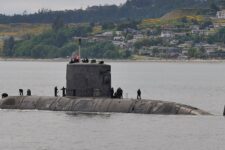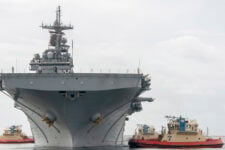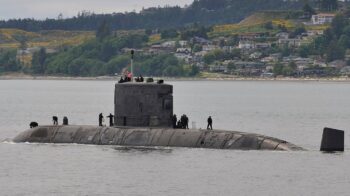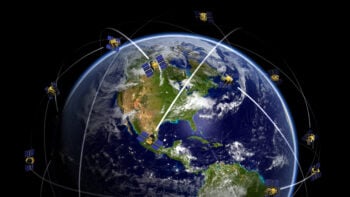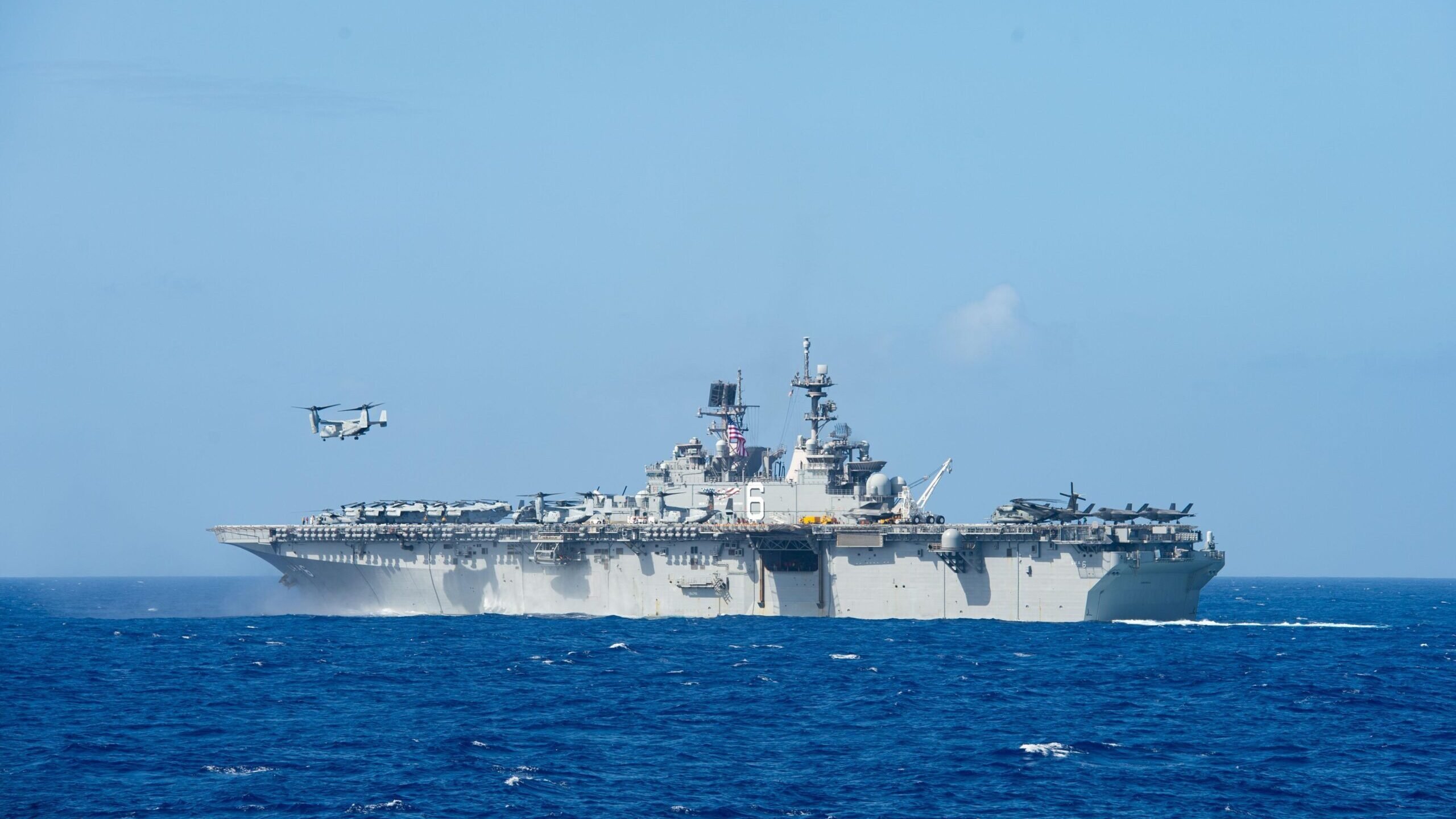
The USS America (LHA-6) is the lead ship of its class, which includes the USS Bougainville (LHA-8). (U.S. Navy photo by Mass Communication Specialist 3rd Class Nicholas V. Huynh)
WASHINGTON: A year-long delay in the delivery of the amphibious assault ship Bougainville (LHA-8) was caused by defects discovered in the main reduction gears and under staffing problems at the shipbuilder, a new report by a government watchdog revealed.
Additionally, changes to accommodate the ship’s new Enterprise Air Surveillance Radar have also contributed to schedule delays, according to the report by the Government Accountability Office, published Wednesday.
Program officials told GAO “that the shipbuilder continues to prioritize completing ships with earlier delivery dates, leaving LHA 8 construction understaffed,” according to the watchdog.
Service “officials said they can do little to address the issue beyond delaying LHA 8’s delivery by about a year” to February 2025, GAO officials wrote of the Navy’s ship program.
The delays will result in the ship’s final cost exceeding the original target cost by $68 million. Costs that exceed the cost target but are below the contract’s price ceiling will be shared by the Navy and shipbuilder HII, according to GAO.
Breaking Defense has reached out to both the Navy and HII for comment about the GAO report.
The 13-month delay to the ship’s delivery was disclosed in recent Navy fiscal 2022 budget justification documents but the new GAO report brings the delay to the forefront and includes details not mentioned in the service’s annual justifications books submitted to lawmakers.
The America-class ships replace the retired LHA-1 Tarawa-class vessels and are capable of transporting 1,350 Marines and their equipment to hostile shores.
The number of amphibious ships has always been a sensitive issue with the Pentagon. As the Marine Corps’ vessel of choice, the smaller service has always lobbied lawmakers and internally within the Navy to fund a larger fleet. But budget constraints have made that challenging.
This year the issue has come to the forefront. Lawmakers published draft legislation this week that would mandate the Navy maintain a fleet of no less than 31 amphibious warships. That number is driven by a recently completed joint study between the Navy and Marine Corps.
Canada weighing international ‘collaboration’ on future subs
Canadian Defence Minister Bill Blair said his German counterpart approached him about joining the German-Norwegian submarine package.
